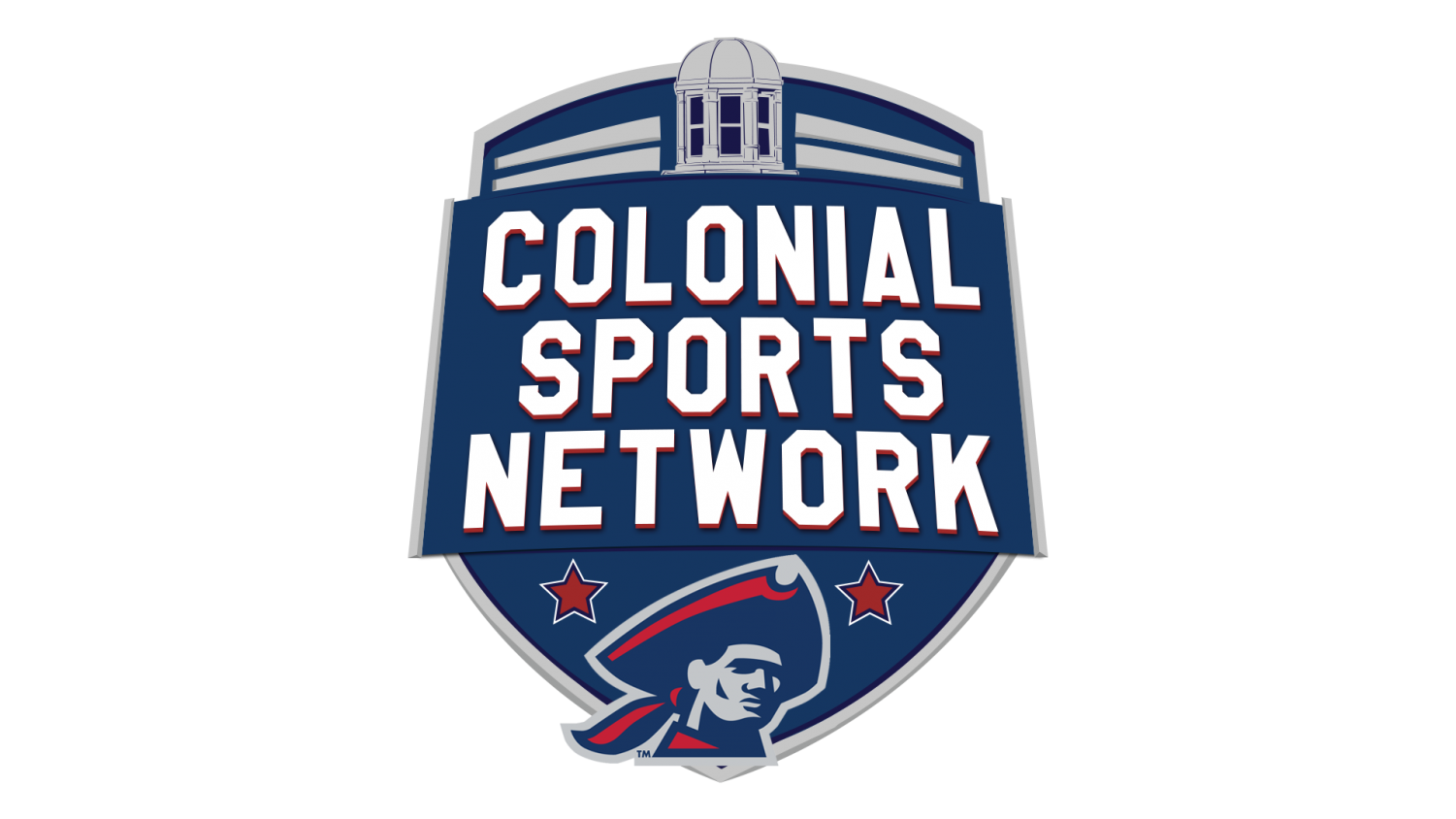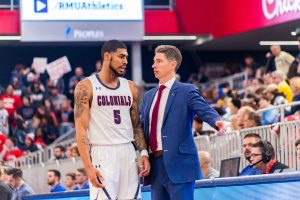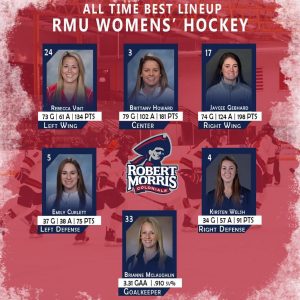The difficulties travel and distance cause in the NEC for Robert Morris
February 3, 2020
MOON TOWNSHIP– 4,030 miles. Robert Morris University’s 15 NCAA teams rack up the most gas mileage out of the 11 total schools competing in the Northeast Conference. That number comes from regular-season conference play alone.
The annual distance traveled for RMU is more than traveling from West Quoddy Head, Maine, the northernmost point of the contiguous U.S., to San Diego, California, which comes in at 3,387 miles.
Not only do RMU athletes travel frequently to compete, but they have to go much further than any other team in their conference. RMU travels, on average, 403 miles per trip; RMU to Merrimack College alone is 601.1 miles, the furthest distance between any two schools in the NEC.
Traveling extended distances can create a competitive disadvantage for teams, adding to the fatigue that a student-athlete already faces in competition and training.
A Growth, Opportunities, Aspirations and Learning of Students in College (GOALS) study, conducted by the NCAA in 2015, detailed in this article on the James Martin Center website, saw Division I men’s basketball players report spending 34 hours per week on athletics. For football players, the number of hours is even higher with players reporting spending 42 hours per week on their sport, which is the equivalent of a full-time job.
Longer trips for competitions, in addition to significant time in mandatory and voluntary practices, makes maintaining a competitive edge more difficult for a school like RMU that has to spend more time traveling for conference games than their opponents, who are largely located along the East Coast.
“RMU and Saint Francis U. both have a competitive disadvantage in regards to being the two Northeast Conference schools that are located the farthest west in the conference,” said RMU Director of Athletics and Vice President Chris King, Ph.D.
Furthermore, frequent travel requires more time out of the classroom. This only adds to the difficulty of being a student-athlete who has to maintain a certain GPA to remain eligible for competition.
“The other issue involves missing additional class time,” said King. “since the east coast NEC institutions travel to and after competitions within a couple of hours to NEC competition and then back to campus. RMU has long bus trips that result in getting back in the middle of the morning or early morning after conference games or contests, or weekend trips.”
With recent conference realignment, travel time has been decreased minorly due to the availability of faster modes of transportation. However, for a school the size of RMU, travel distance is something to be considered when looking at a conference.
“If you have done any research on the recent conference affiliation and realignment in Division I,” said King. “Location hasn’t played as much of a factor in decision making over the past 5-10 years. However, for RMU, and for any conference that we would be a member of, location will absolutely play a major role in our decision making. Conference affiliation decision making must take into account the student-athlete experience, fiscal responsibility, alumni engagement, fan experience, and geographic rivalries.”
The geographic rivals are somewhat lacking in the NEC with only Saint Francis University, just about 96 miles away, being reasonably close.
This can damage the fan experience for a university. Many of the nation’s top rivalries are very close to each other, giving their competitions an exciting edge that draws in crowds to see the teams compete for who will be the best in the region.
When considering rivals it is, of course, important to also understand familiarity, how well known the competition between the schools is. That’s something that RMU has with its conference foes.
A non-conference geographic rivalry game against Duquesne University would likely be preferable to RMU alumni rather than the longtime conference foes Mount St. Mary’s University or Long Island University.
“RMU has been a member of the Northeast Conference for many, many years, and our alumni and fan base are familiar with the NEC institutions,” said King. “However, many of RMU’s non-conference rivalries have been geographic-based, and as an alum myself, I personally prefer geographic rivalries of those athletic programs that I have grown up watching or are familiar with their athletic and competitive excellence. Alumni engagement and fan experience has a higher likelihood of success when RMU participates against regional rivalries”
Traveling and distance are huge obstacles for RMU in the NEC, whether it is because of the lack of true rivalries or increased exhaustion to the athletes. This requires more time away from class for student-athletes too, which makes remaining academically eligible more difficult than it would for a student-athlete at a different school in the NEC.








